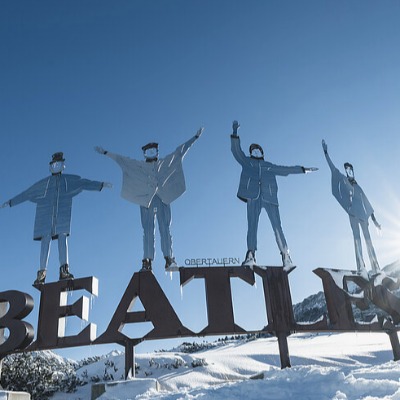20 People Trapped Overnight On Albuquerque's Sandia Peak Tramway

20 people have been rescued having been trapped overnight on Albuquerque's Sandia Peak Tramway. Bernalillo sherrif's department led the rescue. At the time of writing one person remains trapped in the otjetr cable car. The tram terminal is located at the top of Sandia Peak Ski Area, which is on the opposite side of the mountain from the tramway and the city.
Bernalillo County Sheriff’s Office spokeswoman Jayme Fuller said the first 911 call came in at 2:11 a.m. and those stranded were employees of the TEN 3 restaurant who were taking the lift down after their New Year’s Eve shift ended. Ice began to accumulate and stopped the tramway.
One man remains trapped in the other car and Fuller said that rescue crews are “reassessing a plan to get them out now with the weather getting worse.”
The cable car was stuck from 2 a.m. due to icy conditions in the area, the Bernalillo County Sheriff's Office said on Saturday. Sandia Peak Tramway general manager Michael Donavan told ABC Albuquerque affiliate KOAT all passengers were in good condition and had had water and blankets on board the tram car when trapped.
Sandia Peak Tramway earlier posted on Instagram “Sandia Peak Tram is working closely with Search and Rescue and BCSO to ensure a safe evacuation for our staff as soon as weather permits,”
The tramway ascends the steep western side of the highest portion of the Sandia Mountains, from a base elevation of 6,559 feet (1,999 m) to a top elevation of 10,378 feet (3,163 m). A trip up the mountain takes 15 minutes to ascend 3,819 ft (1,164 m), and the normal operating speed of the tram is 20 feet per second (13.6 mph; 21.9 km/h). Approximately four "flights" leave every hour from the base and top termini. The viewshed from the tram includes all of Albuquerque and roughly 11,000 square miles (28,000 km2) of the New Mexico countryside.
The tramway has only two support towers. The first tower, which is 232 feet (70.7 m) tall, is situated at an elevation of 7,010 feet (2,137 m) above sea level and built as an inclined tower with an inclination angle of 18 degrees. The second, just 80 feet (24.4 m) tall, is situated at the end of a major spur of the mountains at an elevation of 8,750 ft (2,667 m) and was built by the aid of over 2,000 helicopter trips, with support rods driven up to 40 feet (12 m) into the granite.[8]
The longest span is between the second tower and the top terminal. This span is the third-longest clear tramway span in the world, at a length of 7,720 feet (2,353 m). Mid-span, the cables are 900 ft (274 m) above the mountainside. This span passes over Domingo Baca Canyon, part of which is referred to as TWA Canyon. This is the site of the crash of TWA Flight 260 on February 19, 1955, in which the lives of all 16 passengers and crew were lost. While much of the wreckage was removed during construction of the tramway, some still remains on the canyon floor and may be visible to riders of the tram.













